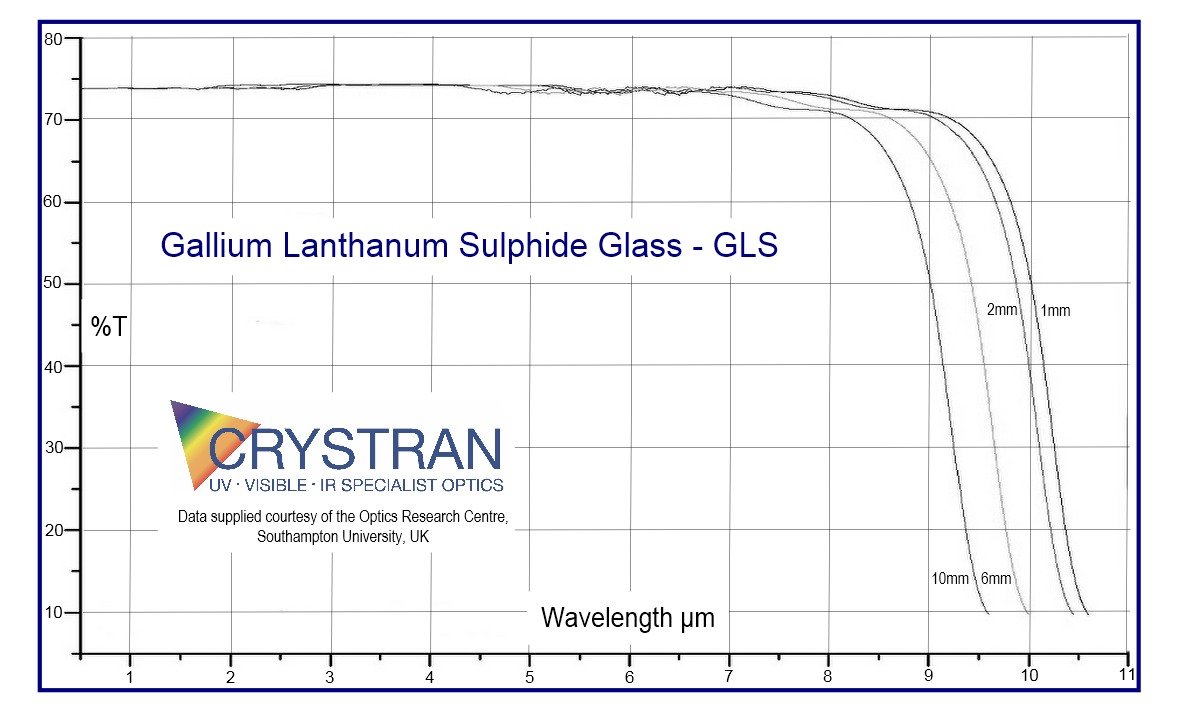

Gallium Lanthanum Sulphide GLS
♦ Gallium Lanthanum Sulphide (GLS) SDS
♦ Gallium Lanthanum Sulphide (GLS) Data Sheet
Gallium Lanthanum Sulphide is a radically new chalcogenide glass and a much awaited alternative to toxic Arsenic-based glasses, with an optical transparency from the visible to infrared wavelengths, and thermal stability up to 550oC. In addition, GLS can be melted in a large scale without the need for sealed ampoule processing making GLS production and processing safer and more economical. Equally important, impurity levels, in particular, OH- and SH- absorption bands at around 3 and 4 ìm have been substantially reduced thus increasing performance.
GLS has found use in a wide range of optoelectronic applications and is available as polished optical components, thin and thick films and in optical fibre form.


| µm | No |
|---|---|
| 0.5461 | 2.522 |
| 0.5790 | 2.500 |
| 0.6439 | 2.467 |
| µm | No |
|---|---|
| 0.6678 | 2.458 |
| 0.7065 | 2.466 |
| 1.0140 | 2.398 |
| µm | No |
|---|---|
| 1.3673 | 2.379 |
| 1.7101 | 2.371 |
Gallium Lanthanum Sulphide (GLS) glass is produced by proprietary processes under conditions of the highest purity. Particular effort is made in removing transition metal impurities to a level of better than 1 ppm total metallic impurities with SH- and OH- less than 1 ppm. GLS is routinely processed from ingots of 500 grams. Other glass compositions are available including rare earth doped (Ce, Pr, Nd, Tb, Dy, Ho, Er, Tm, Yb), halide (F, Cl), and Ag doped samples.
Damage Threshold >200MW/cm2 at 1550nm
Acousto-optic Figure of Merit: M2 = 6 x 10-15
Verdet Constant = 0.205 min/Oe/cm
REFERENCES
Petrovich, Hewak et al Journal of Non-Crystalline Solids 326&327 (2003) 93–97